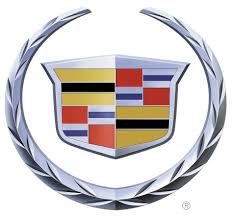CTS AWD V6-3.6L (2009)

The engine control module (ECM) disengages the cruise control operation based on the signals from the following switches:
*
The brake pedal position (BPP) sensor
*
The clutch pedal position (CPP) sensor, if equipped with a manual transmission
*
The On/Off switch
*
The cruise control cancel switch
The cruise control system will disengage when the brake pedal is applied. The body control module (BCM) monitors the BPP sensor via the BPP sensor
signal circuit as the voltage signal increases while the pedal reaches the fully applied position. The ECM monitors the BPP signal through a discrete
input and a serial data message signal from the BCM indicating the brake status. When both signals indicate the brake pedal is applied, the ECM will
disengage the cruise control system. For further information on the BPP sensor, refer to Exterior Lighting Systems Description and Operation (See:
Lighting and Horns/Description and Operation/Exterior Lighting Systems Description and Operation) and to Brake Pedal Position Sensor Calibration (
See: Lighting and Horns/Brake Light Switch/Service and Repair/Brake Pedal Position Sensor Calibration).
The cruise control system will also disengage when the cruise control on/off switch is switched OFF, or the cruise control cancel switch is activated. The
body control module (BCM) determines when the cruise control cancel switch is activated. When the normally open cancel switch is closed, the BCM
detects the predetermined voltage signal on the cruise control function switch circuit. The vehicle speed stored in the memory of the engine control
module will be erased when the cruise control On/Off switch is turned OFF, or the ignition switch is turned OFF. The BCM sends a serial data message
to the ECM in order to disengage the cruise control system. The cruise control system will disengage when the ECM detects that a driver override
function has been active for approximately 60 seconds. When the cruise control system has been disengaged, the ECM sends a serial message to the
instrument panel cluster (IPC) in order to turn OFF the Cruise Engaged indicator.
Every time the cruise control system is disengaged, the ECM will keep track of the reason for system disengagement. The last 8 disengagement reasons
will be recorded within the ECM memory. The scan tool will display the last 8 Cruise Disengage History parameters, in which one out of approximately
50 possible reasons will be displayed in each of these 8 parameters. For the disengagement reason to be displayed within the scan tool parameter either
the cruise control system is active and disengagement is requested, or engagement of the system is requested but a fault is present. For a list of each
disengagement reason along with each definition, refer to Control Module References (See: Testing and Inspection/Programming and Relearning) in the
ECM Scan Tool Information.
Cruise Control Inhibited
The engine control module (ECM) inhibits the cruise control operation when any of the following conditions exist:
*
The ECM has not detected a brake pedal activation from the body control module (BCM).
*
A cruise control system DTC has been set.
*
The vehicle speed is less than 40.2 km/h (25 mph).
*
The vehicle speed is too high.
*
The vehicle is in PARK, REVERSE, NEUTRAL, or 1st gear.
*
The engine RPM is low.
*
The engine RPM is high.
*
The system voltage is not between 9 volts and 16 volts.
*
The antilock brake system (ABS)/traction control system (TCS) is active for more than 2 seconds.
